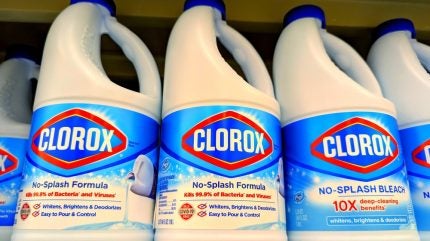
Chemical safety compliance is a crucial aspect of industries handling hazardous substances. Proper packaging not only protects the environment and people but also ensures adherence to strict regulations imposed nationally and internationally.
Packaging for chemical safety compliance involves a combination of suitable materials, precise labelling, and robust design standards to prevent accidents and legal penalties.

Discover B2B Marketing That Performs
Combine business intelligence and editorial excellence to reach engaged professionals across 36 leading media platforms.
This article explores the essentials of chemical packaging, focusing on how businesses can meet compliance requirements effectively.
Understanding the importance of chemical safety packaging
Packaging hazardous chemicals is far more than just containing a product. It is about preventing leaks, spills, and dangerous reactions during transport and storage. Chemicals come with diverse properties — some are corrosive, flammable, or toxic — and each requires specific packaging solutions to maintain safety.
Safety packaging helps reduce risks to handlers, emergency responders, and the public. Improper packaging can lead to chemical exposure, environmental contamination, and costly recalls or fines.
Moreover, compliance with regulations such as the European Agreement concerning the International Carriage of Dangerous Goods by Road (ADR), the Globally Harmonized System (GHS) of classification and labelling, and the Control of Substances Hazardous to Health (COSHH) in the UK, is legally binding.

US Tariffs are shifting - will you react or anticipate?
Don’t let policy changes catch you off guard. Stay proactive with real-time data and expert analysis.
By GlobalDataThe right packaging also plays a key role in maintaining the integrity of chemicals during shipment. It prevents contamination and degradation, ensuring products arrive safely and function as intended.
Hence, companies must pay close attention to packaging materials, labelling, and design specifications to remain compliant and uphold safety standards.
Selecting appropriate packaging materials and design
Choosing the correct packaging materials is the foundation of chemical safety compliance. Packaging must be resistant to the chemical it contains and able to withstand external factors like temperature changes, pressure, and physical impact.
Common materials include high-density polyethylene (HDPE) drums, glass bottles, metal cans, and composite containers, each suited for different types of chemicals. For example, corrosive acids may require corrosion-resistant plastic or lined steel drums, while volatile solvents might need sealed metal containers to prevent vapour release.
Packaging design also involves secondary containment — such as placing a chemical container inside a secure outer packaging to catch leaks — and incorporating features like tamper-evident seals and pressure-relief valves where necessary.
This reduces the risk of spills and explosions, especially during transport.
Packaging must pass rigorous testing, including drop tests, leakproofness, and pressure resistance, in line with standards like UN recommendations on the transport of dangerous goods.
Such certifications demonstrate the packaging’s capability to safely contain chemicals under routine and emergency conditions.
Labelling and documentation for regulatory compliance
Accurate labelling is essential for chemical safety compliance and plays a vital role in emergency response. Labels must clearly display hazard pictograms, signal words such as “Danger” or “Warning”, hazard statements, and precautionary advice as per the Globally Harmonized System (GHS).
Beyond labels, packages need accompanying documentation like Safety Data Sheets (SDS), transport permits, and declarations of dangerous goods. These documents provide detailed information about chemical properties, handling instructions, and emergency measures.
Failing to comply with labelling and documentation requirements can result in significant legal penalties and increased safety risks. Clear, consistent labelling aids in the correct handling and storage of chemicals by workers and logistics personnel, preventing accidents.
Businesses must keep abreast of regulatory changes and ensure all packaging is updated accordingly. Many industries use specialised software to manage compliance documentation and label printing, reducing errors and improving traceability.
Best practices for ongoing chemical packaging safety
Maintaining compliance requires continuous monitoring and improvements. Regular audits of packaging materials, design, and labelling processes help identify potential gaps before incidents occur.
Training employees in chemical handling and packaging regulations ensures awareness of best practices and the importance of compliance. Staff should know how to inspect packaging for damage, verify labels, and correctly prepare shipments.
Sustainability is also becoming a key consideration in chemical packaging. Selecting recyclable or reusable packaging materials helps reduce environmental impact while maintaining safety standards.
Furthermore, businesses benefit from collaborating with packaging experts and regulatory consultants to keep up with evolving safety standards and industry trends. Investing in research and development to innovate safer, more efficient packaging solutions provides a competitive edge.
Ultimately, packaging for chemical safety compliance is a complex but essential task for any organisation dealing with hazardous materials. From selecting suitable packaging materials and design to ensuring clear labelling and documentation, every step must meet strict regulatory requirements.
Adopting best practices in packaging not only safeguards people and the environment but also protects businesses from legal and financial risks.
As regulations evolve and sustainability gains focus, ongoing vigilance and innovation will be key to maintaining effective chemical safety compliance.





